Traumatic brain injury (TBI) is a serious medical condition that can occur as a result of a blow or jolt to the head. TBIs can cause a wide range of symptoms, including headaches, dizziness, confusion, and loss of consciousness. In severe cases, TBIs can lead to long-term disability, cognitive impairment, and even death. Understanding the physiology of TBI is essential to developing effective treatments and interventions to minimize the impact of this condition.
The Physiology of Traumatic Brain Injury:
The brain is one of the most complex organs in the human body, and its physiology is incredibly intricate. The brain is protected by the skull and a layer of cerebrospinal fluid, which cushions it from external trauma. However, a sudden impact to the head can cause the brain to shift inside the skull, leading to damage to brain tissue, blood vessels, and nerves.
Primary Injuries
The initial injury caused by a TBI is known as the primary injury. Primary injuries can be classified into two types: focal and diffuse. Focal injuries occur when there is direct impact to the head, leading to localized damage to brain tissue. Diffuse injuries occur when there is a rapid acceleration or deceleration of the head, leading to widespread damage to the brain.
Secondary Events
Following the primary injury, a cascade of secondary events occurs, which can lead to further damage to the brain tissue. Secondary injuries can occur over hours or days following the initial injury and can cause significant neurological damage.
One of the key secondary events following a TBI is the disruption of the blood-brain barrier. The blood-brain barrier is a specialized layer of cells that separates the blood vessels in the brain from the brain tissue. This barrier regulates the movement of substances between the blood vessels and the brain. When the blood-brain barrier is disrupted, toxins and other harmful substances can enter the brain tissue, leading to further damage.
Another secondary event following TBI is the release of neurotransmitters. Neurotransmitters are chemicals that enable communication between brain cells. Following a TBI, there is an excessive release of neurotransmitters, which can cause a cascade of biochemical reactions that can lead to cell death and further damage to brain tissue.
Inflammatory Response
The inflammatory response is also activated following a TBI, leading to the release of cytokines and other inflammatory mediators. These substances can further damage brain tissue and exacerbate the neurological deficits associated with TBI.
Conclusion:
Traumatic brain injury is a complex medical condition that involves both primary and secondary injury mechanisms. Understanding the physiology of a traumatic brain injury (TBI) is essential to developing effective treatments and interventions to minimize the impact of this condition. Further research is needed to better understand the complex interactions that occur following a TBI and to develop targeted therapies that will minimize the secondary events and promote neurological recovery.
References:
- National Institute of Neurological Disorders and Stroke. Traumatic Brain Injury: Hope Through Research. Retrieved from https://www.ninds.nih.gov/Disorders/Patient-Caregiver-Education/Hope-Through-Research/Traumatic-Brain-Injury-Hope-Through
- Giza, C. C., & Hovda, D. A. (2014). The new neurometabolic cascade of concussion. Neurosurgery, 75, S24-S33. doi: 10.1227/NEU.0000000000000505
- Werner, C., & Engelhard, K. (2007). Pathophysiology of traumatic brain injury. British Journal of Anaesthesia, 99(1), 4-9. doi: 10.1093/bja/aem131


